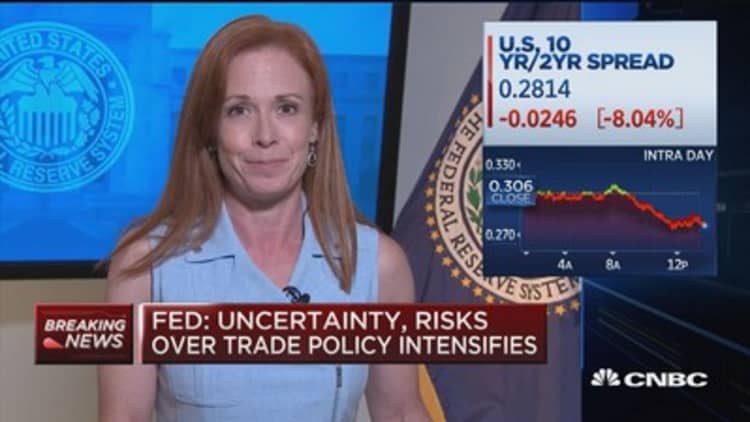The Federal Reserve’s efforts to unwind its mammoth portfolio of bonds isn't as easy as advertised.
Central bank officials at their June meeting discussed another issue, this one relating to the mortgage-backed securities on the Fed’s balance sheet. According to the minutes from the June 12-13 gathering, proceeds the central bank is getting from the MBS it holds are running below the capped level of payments it has targeted for runoff later this year. Anything above the cap is supposed to be reinvested.
Essentially, that means that the Fed will be letting all of those proceeds run off and not reinvesting anything, a new development but not one that was unanticipated. The situation likely means that the balance sheet reduction will be less than the $50 billion maximum that it was to hit in October. The Fed originally had intended to be running off $20 billion a month in MBS, along with another $30 billion in proceeds from Treasurys it is holding.

The Fed accumulated the bonds during its economic stimulus program that began in late 2008 during the financial crisis. The balance sheet had hit more than $4.5 trillion at one point, while the runoff program has resulted in a reduction of more than $100 billion so far.
Fed officials noted that the MBS market is sensitive to long-term rates, so lower yields later could result in the need to reinvest again.
The MBS discussion came as the FOMC approved an adjustment in the rate it pays on excess reserves that banks hold with the Fed.
While it approved a quarter-point rate increase in the funds rate, it raised the interest on excess reserves rate only 0.2 percentage point. The funds rate had been moving to the top end of its range and getting close to the IOER rate. The Fed uses IOER as a guidepost for its benchmark funds rate.
Since that move was approved, the funds rate again has jumped to the top of its range and most recently was within 0.04 point of the IOER. Fed officials in June said the reason the funds rate was moving higher could be due to higher rates in the overnight repo market.


